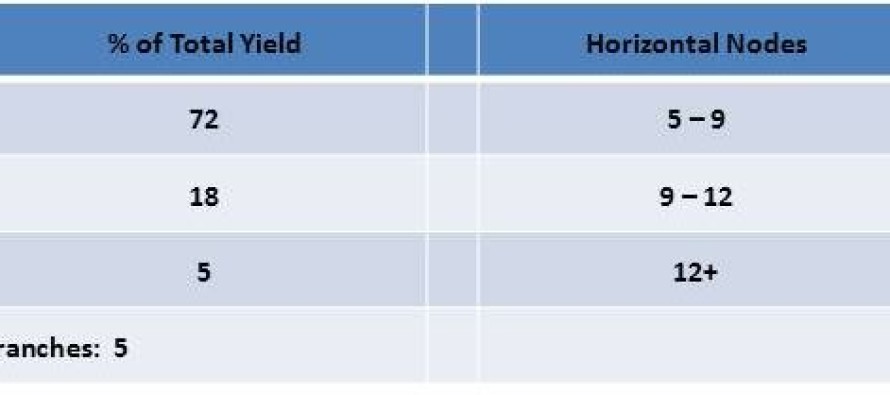Fruiting Gaps Present in Mississippi Cotton Fields

Open bolls are beginning to appear in several areas of the state which is signaling that we are headed toward the finish line with this crop. However, several calls have come in this week regarding fruiting gaps present in a portion of this year’s cotton crop. Several fields have been examined this week which exhibited a similar appearance. Generally, three to four fruiting branches in the lower portion of the crop are completely devoid of fruit. Depending on planting date, some fields have fruit on node five or six with the gap occurring above this point. However, other fields do not have any fruit until node nine or above. In most instances, fruit retained above the gap first appear on third positions, then in the second position on the next node up the plant, and in the first position on the next node up. This fruiting gap is most likely due to extended periods of cloudy and rainy weather experienced during the first two weeks of July. Although insects such as plant bugs can cause reduced fruit retention, they typically will not cause multiple fruiting branches with no fruit present unless allowed to infest a cotton crop with no control measures for a prolonged period of time. The table below is based on research conducted several years ago at Mississippi State University and provides an indication of where seed cotton yield comes from on a cotton plant. Keep in mind that the data below was collected from plants without a fruiting gap and are intended to be used as an example of where yield typically comes from. Although fruit in upper and outer portions of the canopy are not as productive as those closer to the mainstem and in the lower portion of the canopy, adequate yields can still be obtained from a “top cropâ€.
For fields that have a fruiting gap as described above, several management options should be considered. A more aggressive approach to insect management should be considered. Given that a portion of the crop has already been lost, extra care should be taken in order to protect the portion of the crop that is still retained. In addition, thought should be given to managing vegetative growth. When fruit retention is reduced, cotton will direct resources normally allocated to developing fruit into growth which can lead to excessive plant height and vegetative growth. Excessive height and vegetative growth can lead to issues with penetration of insecticides or harvest aids into the canopy as well as reduced harvest efficiency.





Let me tell You a sad story ! There are no comments yet, but You can be first one to comment this article.
Write a comment